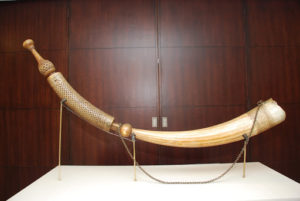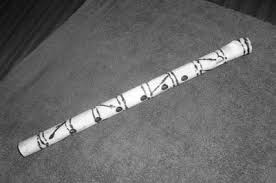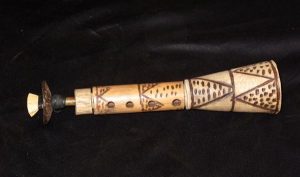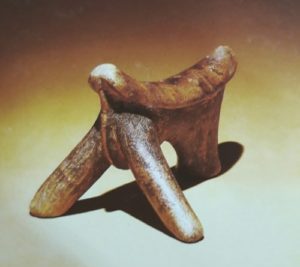Kenyan Wind Instruments

Siwa (Swahili) – flute

The Waswahili are said to be among the earliest settlers of the towns that emerged along Kenya’s coast. In Pate, the city state that grew in the northern region of the Swahili coast, various customs became part of the community, and among these was music.
In 1688 the WaPate crafters made a horn from ivory. It was named Siwa and it would be used during various ceremonies. The interesting feature about the Siwa was that it was blown from the side, similar to the transverse flute.
Chivoti (Digo) – flute

There’s a mellow outro to a lot of instrumentals that leaves the listener satisfied as the music comes to a halt. This musical routine isn’t something new, rather a concept that was even found in the past among the Digo. The name of their favoured outro instrument is chivoti. Of note, it is the only one of its kind found in Kenya. Made from bamboo, this traditional instrument is similar to a flute, with six holes and longer than most wind or string instruments.
Nzumari/Zomari (Duruma) – flute

Did you know that once upon a time the Duruma used a nzumari which produced a similar sound to that of bagpipes? The instrument is of Arabian descent, named after the Arabian zummarah. Its popularity grew around Africa but it was first found in Egypt over 3,000 years ago. It has a double reed which is held in the mouth, a shallow lip shield made from coconut shell, tubing made from fine brass fixed into the section made of bamboo with the plug from a cassava. It is also known as the African oboe and has 6 holes to produce different notes


21 Comments
Thanks for all the useful information! I’d love to see more information on traditional musical instruments – I was able to find a copy of Traditional Musical Instruments of Kenya (published by the Kenya Bureau of Literature, 1980, 1991) online and it has a little more information. I’m especially interested in the chapter on the manufacture of these instruments – are people still making them today? Are young Kenyans rediscovering these instruments and mixing them into contemporary music? I recently found a musician via social media (@labdiofficial on instagram) playing the Orutu. I’d love to hear more on this topic! Thanks
Hello Wahiga. This is so far what we have been able to curate based on information available. We will take your need into consideration.
Biringi is from which community
kikuyu whistle
Could you show me the picture of Borongo and Coro instruments
Ndurerut is found in which community in kenya
Thanks for your question. We will do some research and try and get back to you on this.
Hello,
The ndurerut comes from the Kalenjin community.
What is nzumari instrument community from
mijikenda community
Which community uses bungo wind instruments
What are mlele in Kenya
Hello,
Thank you for your question. From what we have found, this is a notched flute that originates from the Luhya community.
Which community uses biringi ?
Agikuyu
Other indigenous wind instruments include the vilingi from the kamba community,Emborongo from the akuria ,Bung’o from the Luo and biringi from the Agikuyu community
string instrument from mijikenda community
I am looking for several costal instruments which I want to buy eg drums,nzumari. Where can I buy them.
Abu and olwikaa i arefrom which communities in Kenya
How do we differentiate between muturiru and Emborogo
what are some of the intruments that can be found in lugha commmunity